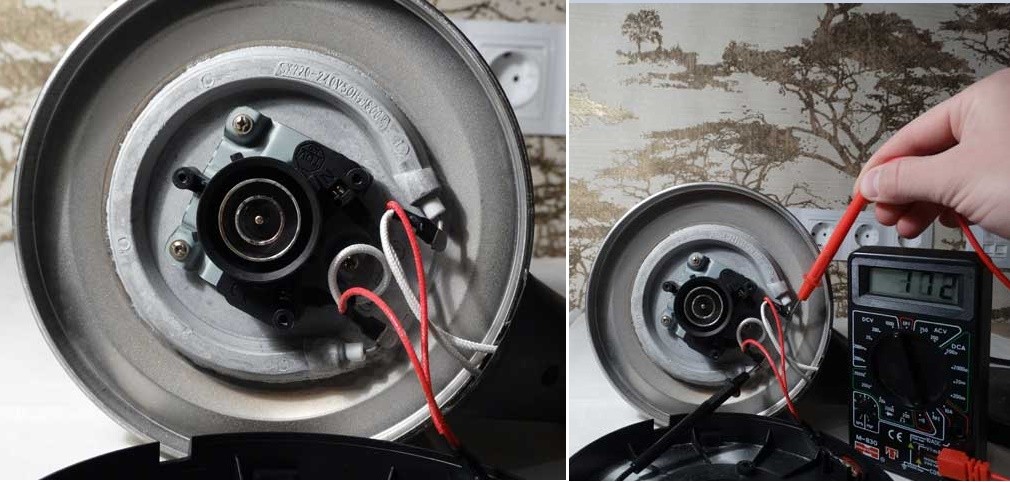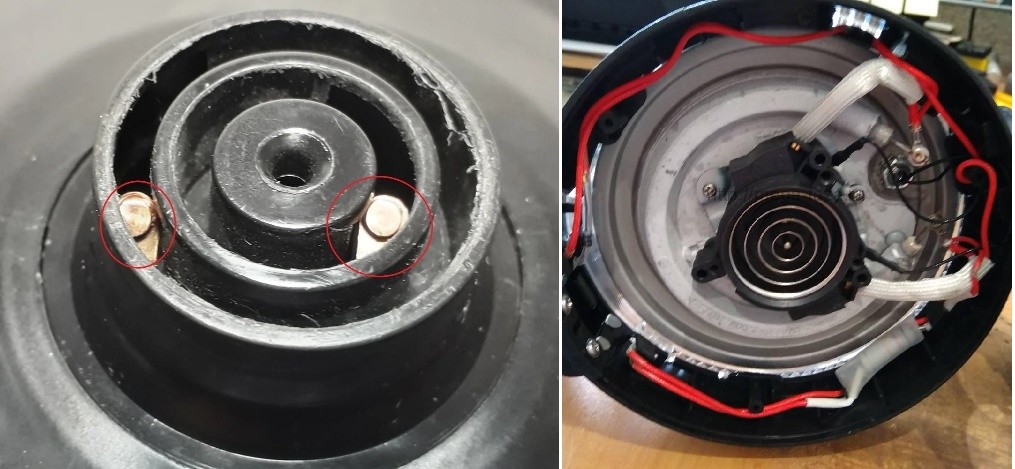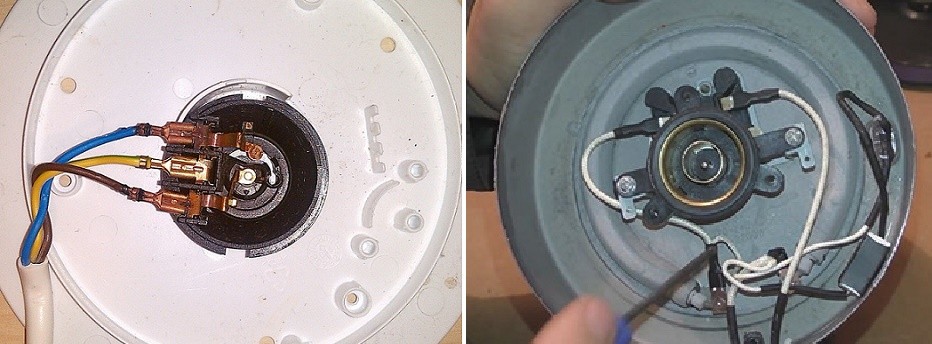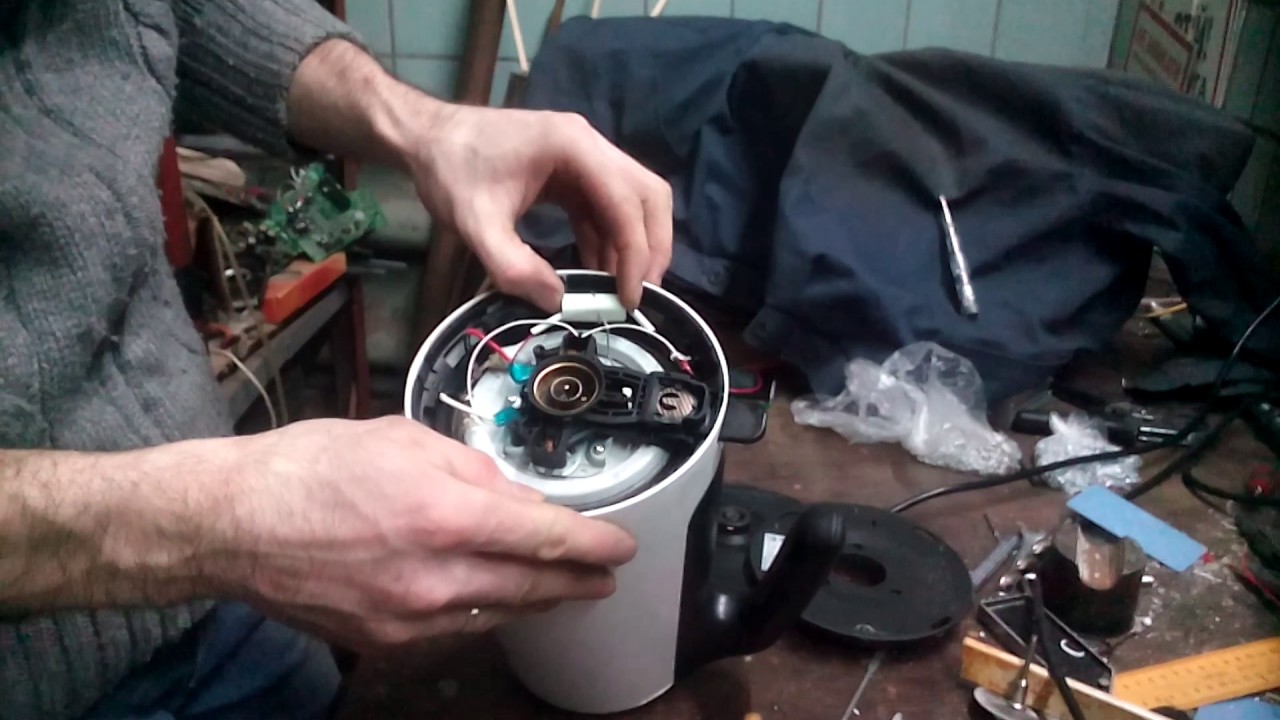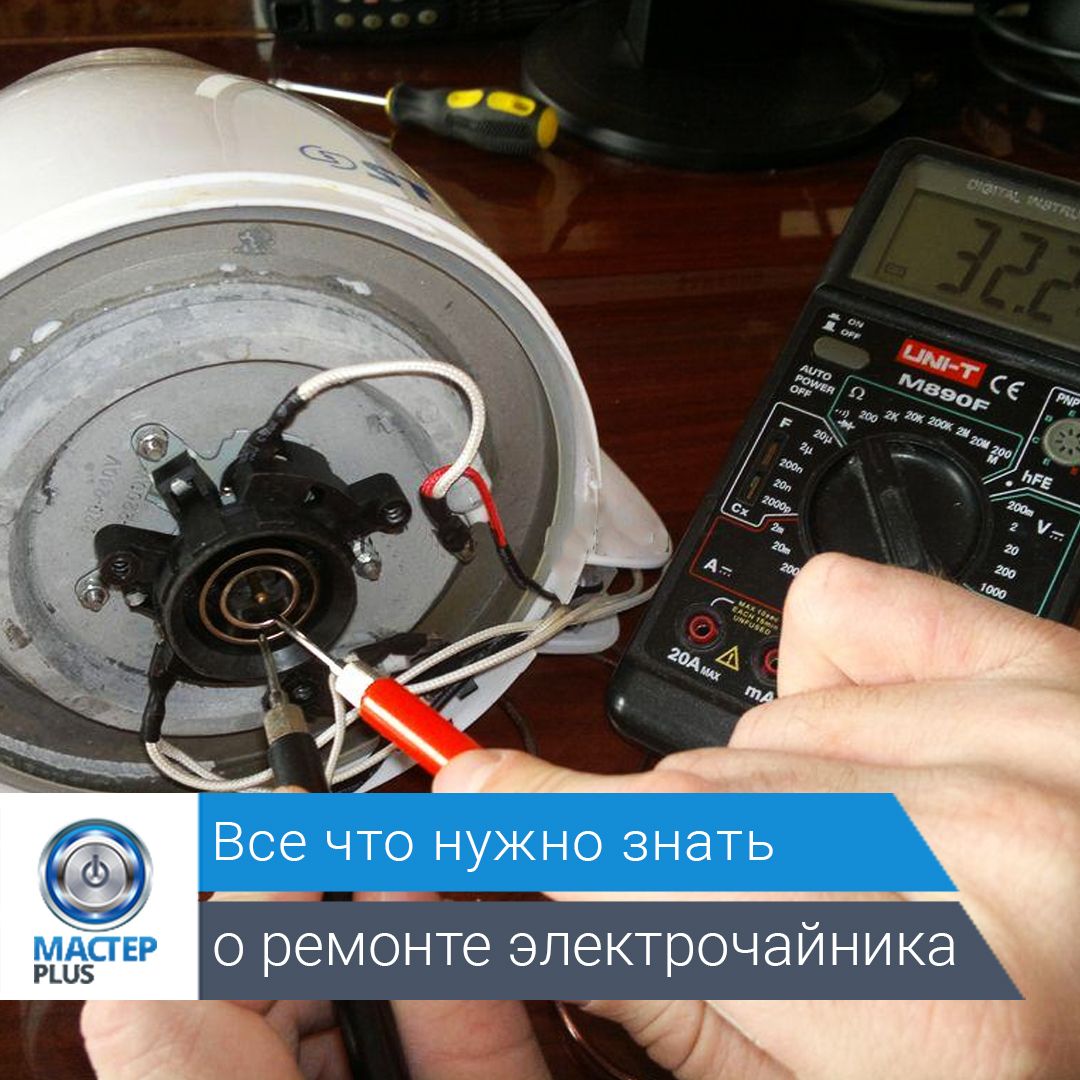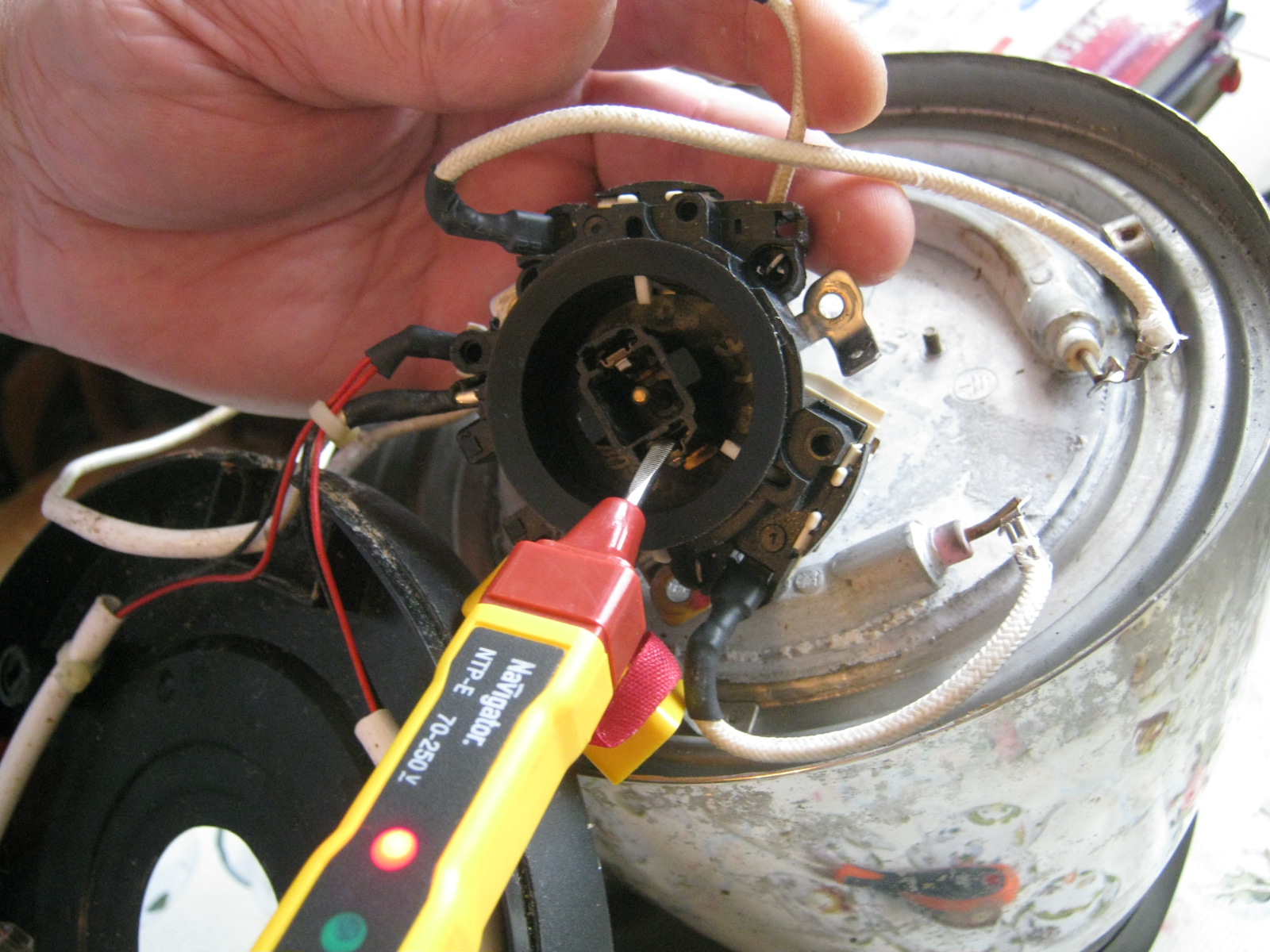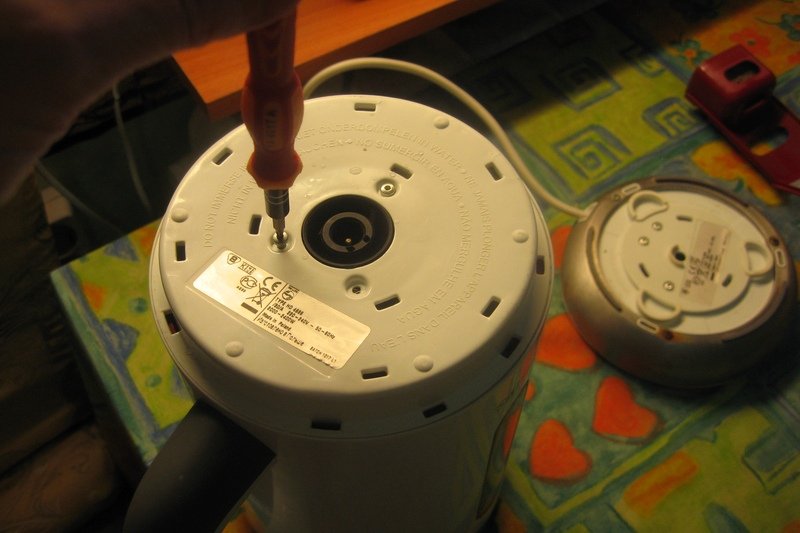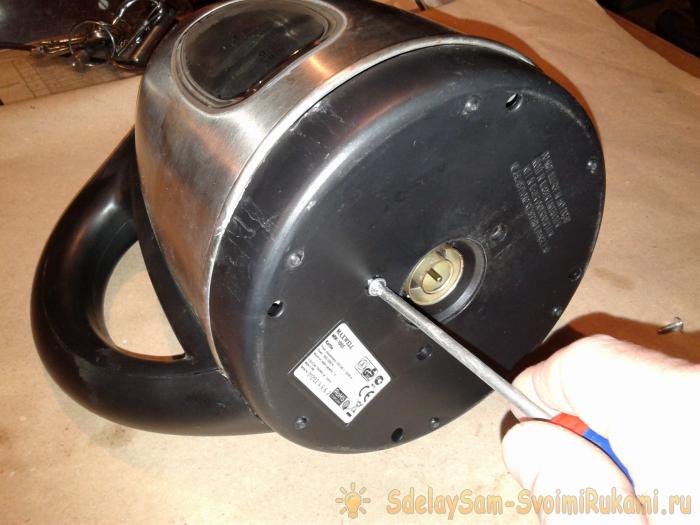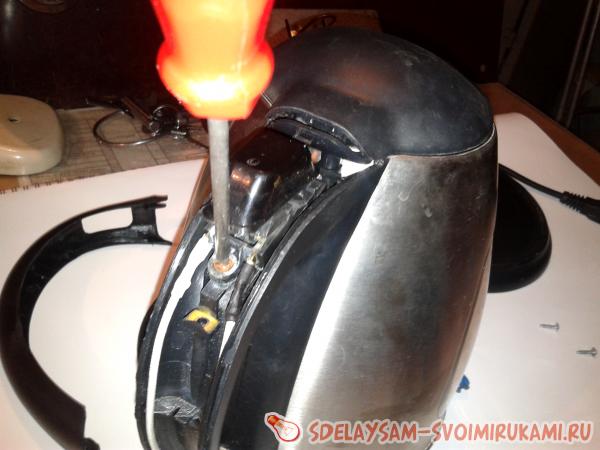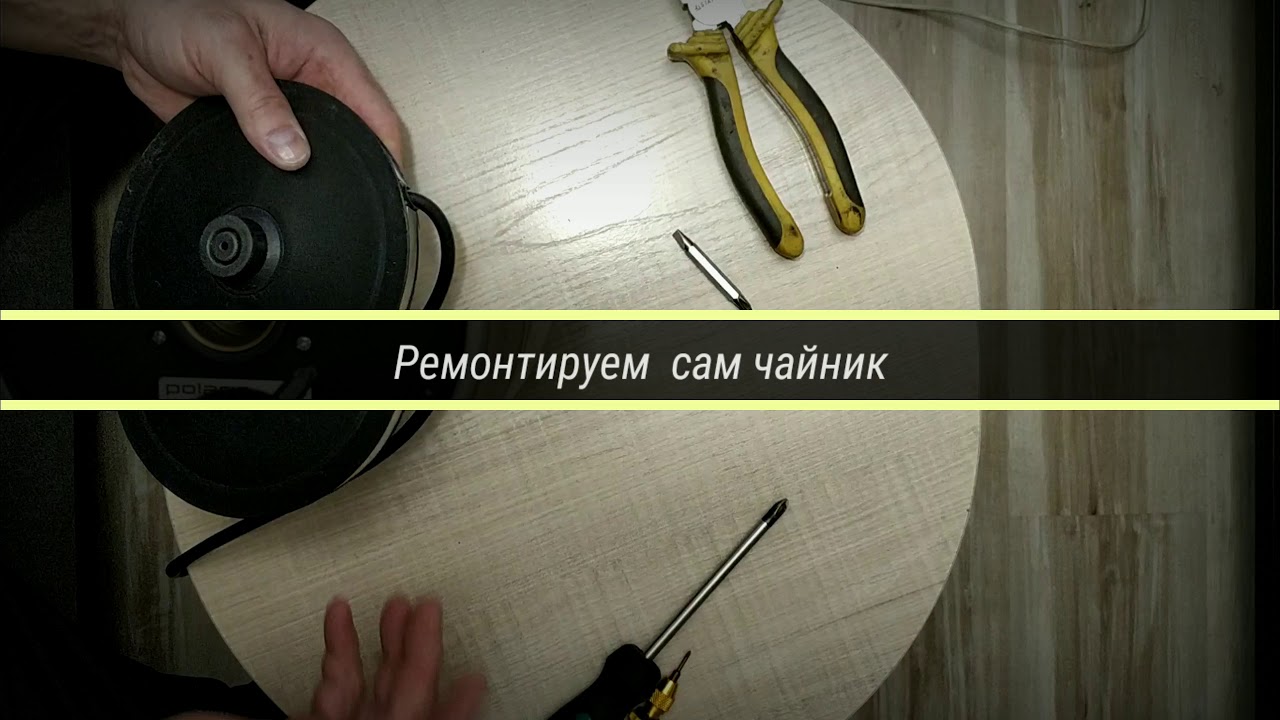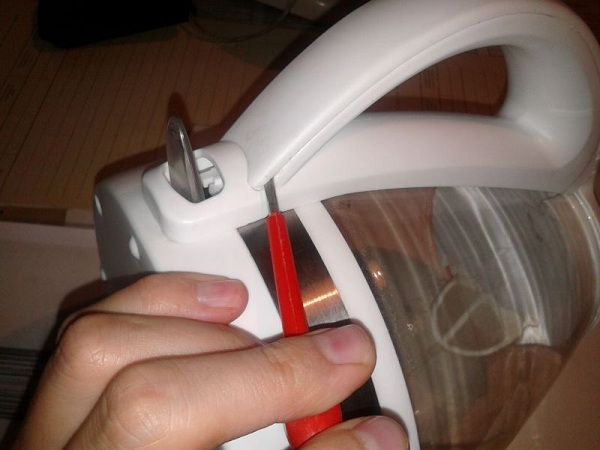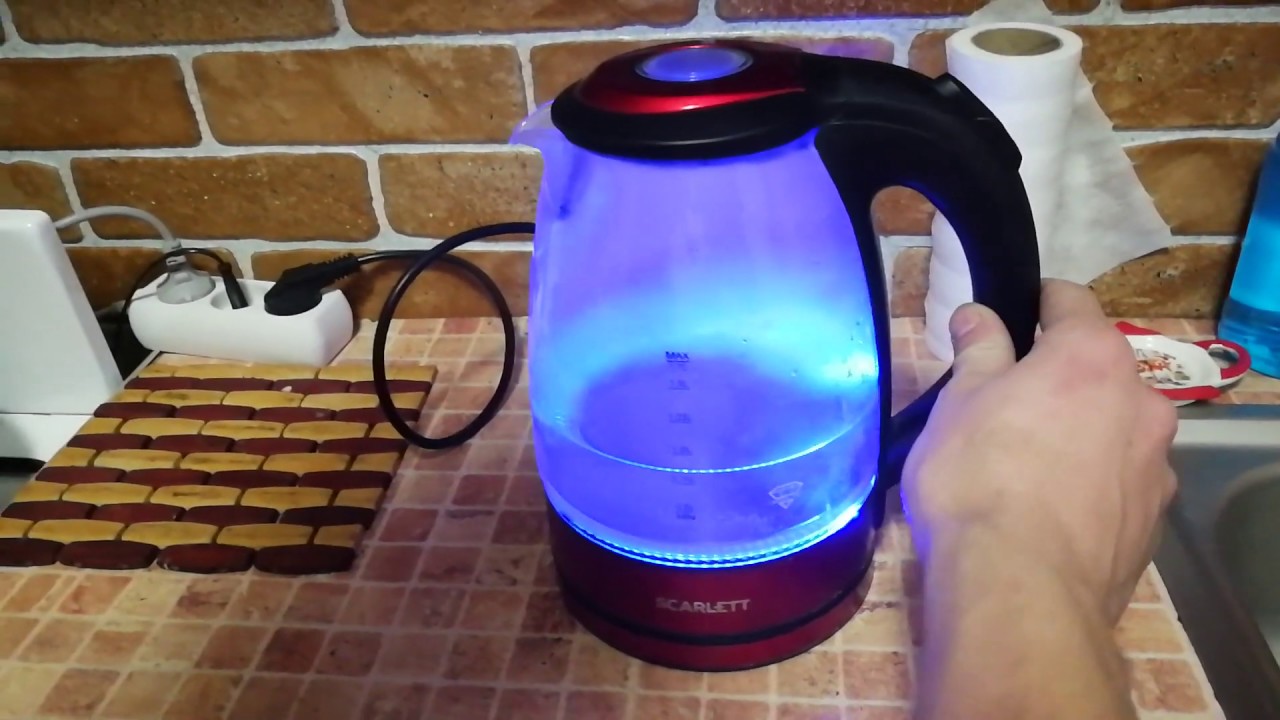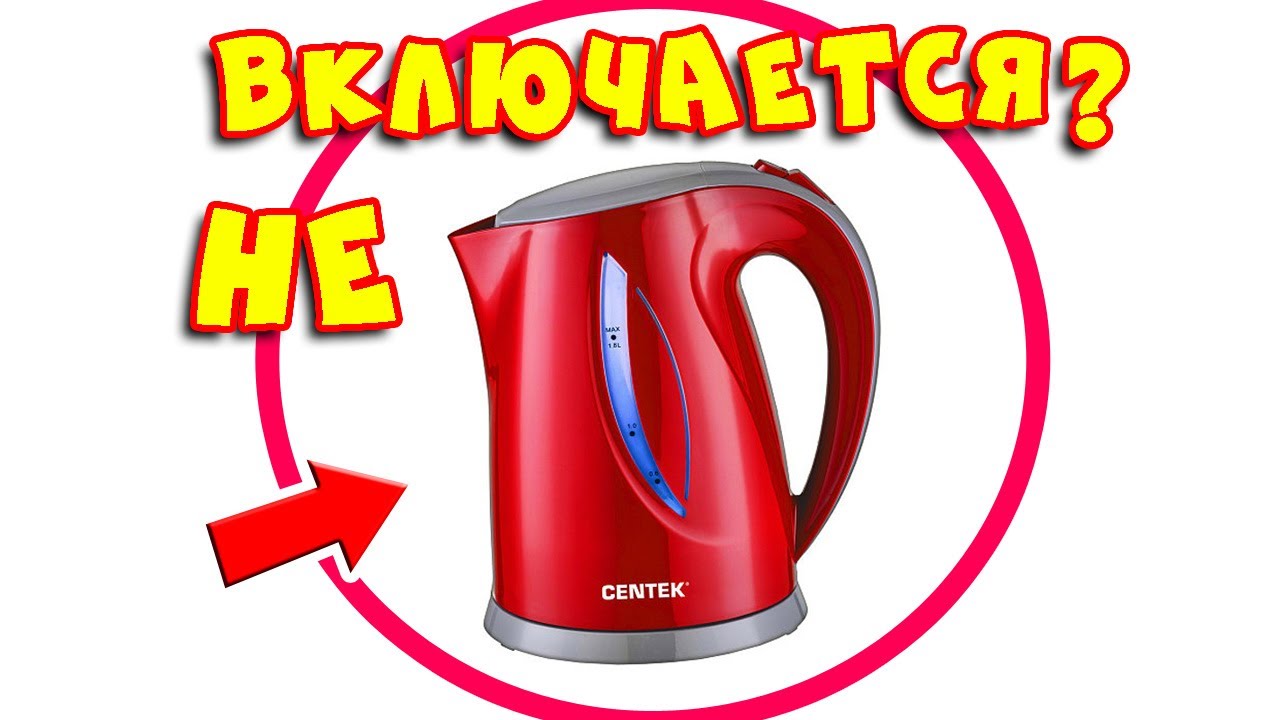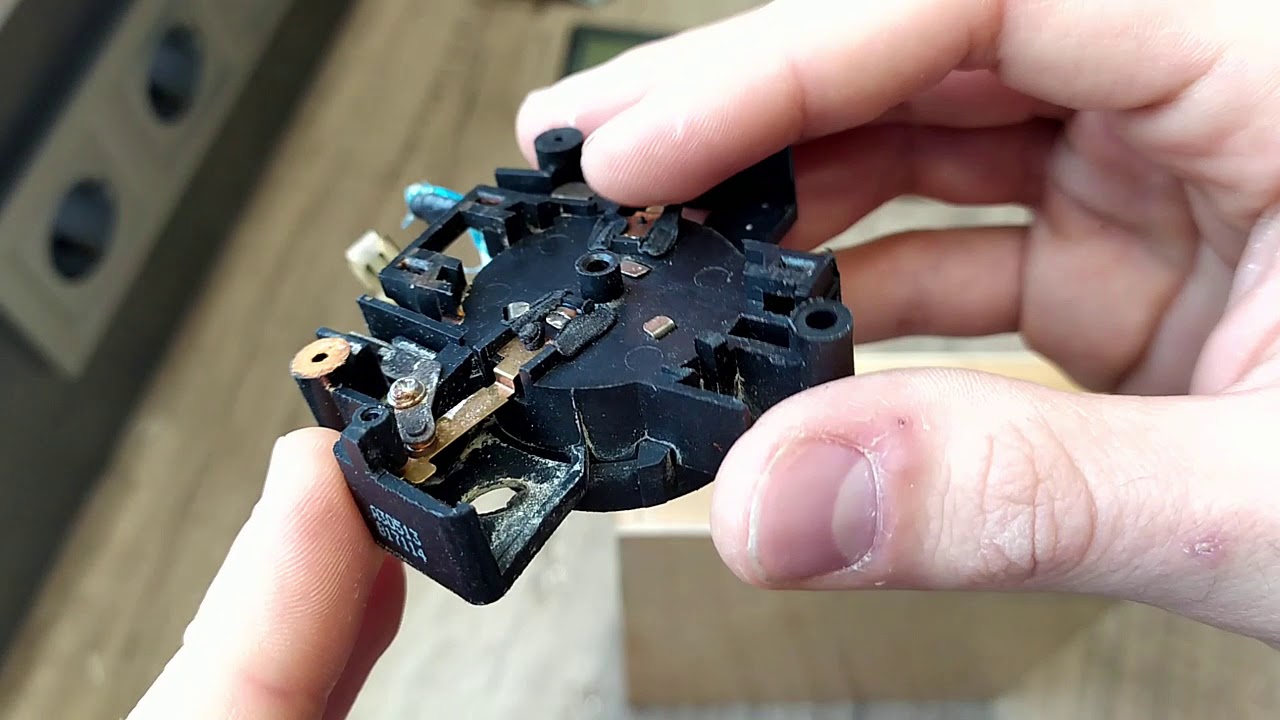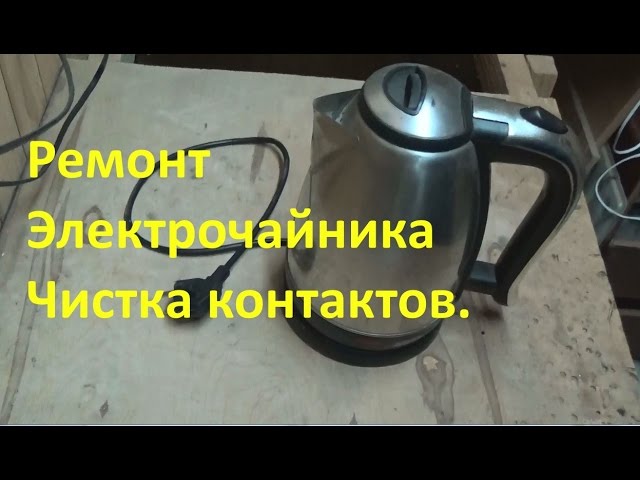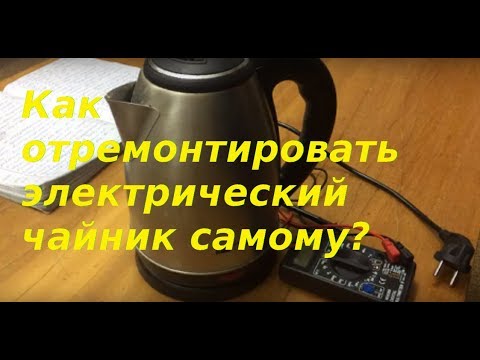Products without cord
This device has a base-stand on which the block and the power connector are connected. Connection to the mains is carried out thanks to a cord that is connected to this very stand. Due to this design, the kettle can be taken without removing the plug from the outlet.
There are modifications that are installed in a fixed position on the base. However, modern products can be placed in either direction. The base also has a special compartment for storing excess cord. Cordless teapots contain:
- filter;
- steam outlet;
- indicator for determining the level of liquid;
- power connector;
- base;
- bimetallic disc.
Electric kettle device
- Electric kettle stand. The design has 3 electrical contacts, two of which are located in grooves (they are copper plates) and serve to supply voltage to the kettle, and one is located in the center, serves as a grounding conductor.
- Heating element (TEN). It can be both open (curved or spiral) and closed (like a metal disk). At the ends of the heating element there are terminals for supplying voltage to them, small contacts are welded to them, on which the terminals are snapped.
- Electric switch. Serves to protect and turn on the electrical appliance. A thermal relay is installed inside, which can protect the device during overloads in the network and overheating of electrical wires. There is a thermostat that turns off the device in case of overheating of the heating element.
- Indicator. LED light located on the base of the kettle or on the power button. Indicates whether the appliance is currently working or not.
- Frame. It mainly consists of plastic, this option is available to everyone, as it is inexpensive compared to others; metal and glass (more expensive models). The stand consists of the same material as the kettle itself.
- Teapot flask. The cheapest and simplest models do not have it. In more expensive versions, the flask is located inside the kettle so that it does not touch its walls, thereby maintaining high temperatures for a long time. Consists mainly of metal or glass.
The principle of operation of the electric kettle
First, let's take a look at how the kettle works in general and what goes where. And it works as follows:
- First, the plug is plugged into a 220V AC outlet.
- The mains voltage is supplied through a cable to the stand and XP 1 contacts, they are located quite deeply so that a person cannot touch them.
- The electric kettle has a recess in its base, there are contacts in it, which are closed after the device is installed on the stand.
- After turning on the button on the kettle, the current will pass through the thermal switch St 1 and after the water boils, it will automatically turn off.
- St 2 is a thermal protection switch, it is always in operation, but only activated when the empty kettle is switched on by mistake.
- Well, the last stage is the supply of voltage to the heating element, in the reduction of the heating element.
-
HL - a light that signals a person whether the electric kettle is on or not.
What kind of breakdowns can the kettle be returned to the seller
If the purchased product does not correspond to the declared quality or in the course of operation there are malfunctions in its mechanisms, according to the Law on the Protection of Consumer Rights, the product can be returned to the seller and the money returned. For this, certain conditions must be met.
- - the kettle was not used, the appearance, factory seals and labels, as well as the presentation remained intact
- - the presence of a sales receipt or other document proving the purchase (in the absence of such documents, it is possible to refer to the testimony of witnesses)
- - on the day of circulation, there is no similar product on sale for replacement
- - the satisfaction of the claim for the return of money must occur no later than 10 days from the date of presentation
- - you must have a civil passport with you to draw up an act of return of the kettle.
If the purchased kettle is under warranty, its repair can only be carried out in the warranty workshops, the list of which is given in the warranty card. Self-disassembly of the device and an attempt to eliminate the malfunction entails the termination of the manufacturer's warranty obligations.
A simple conclusion follows from this. It makes more sense to use the warranty than to try and fix the kettle yourself. It is not worth hoping that the workshop will not "notice" the autopsy marks. A professional who is engaged in the repair of household appliances every day and for many years, just one glance is enough to determine whether the kettle was disassembled or not. In addition, there are various tricks on the part of the manufacturer, which are aimed at avoiding such situations. They are not visible to the eye, but clear enough to use them to determine (and prove) the fact of unauthorized disassembly.
All defective goods are subject to return or exchange, at the request of the buyer. The only exception can be complex technical goods that are subject to examination for factory or warehouse defects. The kettle, of course, does not fall into this category.
If any disputes arise, the seller is obliged to conduct an expert examination of the goods at his own expense. The buyer has the right to be present during the examination. If, as a result of the examination, it is proved that the marriage of the kettle (or other product) was formed through the fault of the buyer, then he will be obliged to reimburse all the costs of the examination.
The principle of operation of electric kettles, device and wiring diagram
An electric kettle is a household appliance with a rather simple design, in terms of the type of device and functioning. Today on the market you can find a wide variety of models of electric kettles, but it should be noted that they all function and perform their work according to the same principle. As a rule, for different models of electric kettles, depending on the availability of various additional functions, the schemes may differ insignificantly from each other.
An electric kettle consists of several different parts. The device of such devices, as a rule, consists of:
- A special case that plays the role of a reservoir for heated water. It is worth noting that for some models, the reservoir for the liquid is not the body, but a special removable-type flask.
- Heating element. In electric kettles, such elements are open or, on the contrary, closed. In addition, the Tena used in teapots can be disc or spiral.
- A special stand, which is equipped with a connector that allows you to connect the kettle to the mains power supply.
- A thermostat that disconnects the device from the power supply when the water boils (located directly under the power button of the device).
- A special block, which is a connector for powering the device (located on the bottom of the device in the side or central part).
In models of electric kettles, which are equipped with a special thermostat, there are more contact groups. This feature must be taken into account during their self-repair. Thermostats allow you to heat the water in different modes while using the electric kettle, as well as keep it hot for a long time.
The principle of operation of electric kettles that operate from the electrical network is quite simple.When such a device is connected to the electrical network and the power button is pressed, the heating element begins to heat up. Thanks to this, the water in the kettle's tank boils or heats up to the temperature set by the user (in models with an installed thermostat).
During the heating of the water, when it boils, a large amount of steam begins to form in the body of the kettle, which, through a special channel equipped with a steam passage hole, begins to be supplied to a special bimetallic plate of the thermostat. Due to the effect of steam, the metal begins to gradually expand and act on the lever, thereby opening the contact groups and turning off the equipment.

Disassembly nuances based on the model
Before starting the repair work, it is necessary to conduct a preliminary inspection of the kettle for operability and exclude all sorts of trivial moments that can cause a malfunction (connecting to the mains, starting the power button, correct position, installing the device directly on the stand itself). If, after a preliminary check, the device still remains faulty, then it is necessary to dismantle all units and find the cause of the breakdown. How to disassemble an electric kettle? It is recommended to disassemble models of electric kettles that are equipped with a closed heating element as follows:
- Dismantle the cover located at the bottom of the device. In this case, one must take into account the fact that on older models, the fasteners are located in the upper part.
- In more modern models, during disassembly, it is necessary to remove the top plate, which is fixed in two grooves located at the base of the handle.
- The grooves should be carefully released, and then the bolts located under them should be unscrewed. On some models, the top handle can be removed directly with the cover.
- Then you need to turn the kettle over and remove the fasteners at its bottom.
- Using a screwdriver, snap off the special fixing elements that are located along the perimeter of the kettle bottom.
After dismantling the bottom for breakages, using a tester, inspect the heating element of the kettle. In models equipped with a disc heating element, the heating element does not come into contact with water. Therefore, at this stage, if the heating element is in a faulty state, you can determine the breakdown by calling it with a tester. As a rule, the heating element in the kettle fails due to the appearance of breaks in the spirals in the tube.
To check the thermostat for faults, it is necessary to remove the screw located at the bottom of the handle of the electric kettle. Then the handle must be carefully dismantled and the self-tapping screw must be removed under the power button. The connection points to which the thermostat is connected must be ringed with a multimeter. After ringing, if no malfunction was detected, you need to remove the unit itself. To do this, first the lining itself is dismantled, and then the part is removed. To dismantle the cover, you need to lightly press on it with your fingers and push it forward.
To properly disassemble the old model of the electric kettle, it is necessary to unscrew the self-tapping screws located on the bottom of the device and dismantle its side to gain access to the heating element, as well as the thermostat. In the event that the power button is located at the top of the kettle, the device must be disassembled completely. To check the open Taine, you must first dismantle the cover.
If the heating element is in working condition, and it was not possible to identify its malfunction, then the stand should be inspected. To do this, disconnect it from the mains, turn it over and remove all the bolts. Then you need to dismantle the lower part of the stand and inspect its elements.

Electric kettle stand repair
The reason for the non-working electric kettle may be hidden in the stand.There is nothing special and nothing to break. There is only a contact group and leads from it, to which the electrical cord is connected. All this can break here - it is the wire to fall off or the contact point to oxidize.

There is nothing special to break in the stand of the electric kettle.
Most kettles do not solder the wires from the cord. Contact is achieved using copper connectors that fit over the pins of the contact group. We carefully examine, pull well. If there is an oxide film (it is dark) or burnt places, we remove everything, clean it to a clean and smooth metal.
If the contacts are clean, but "move", remove it, squeeze it with pliers and insert it into place. If the kettle is no longer under warranty, you can solder the contacts for reliability.

With outward similarity, the cylindrical contacts may be different. Available with movable contacts between plastic lugs
Also, it is worth taking a close look at the contact group. Despite the fact that they are similar, their device may be different. There are some, as in the right photo - with movable contacts, which are located between the cylindrical plastic protrusions. When pressed (with a toothpick, the end of a screwdriver, etc.), the contacts should slide down smoothly. After releasing the force, they should return to their original position. Perhaps an oxide film or other contamination is preventing the contact from moving, because of this, the kettle does not work.
The second type of contact is with a pin in the center. There are usually fewer problems with him, but we look here too. You never know what could be.
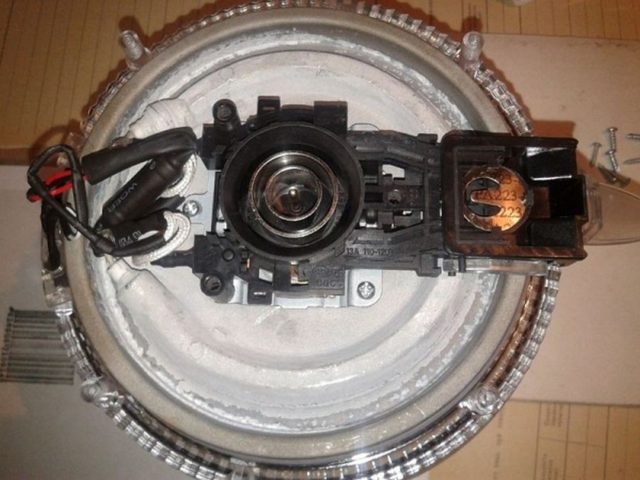
We remove even the smallest traces of dirt
In any case, we check for the presence of a dark film. It is an oxide deposit that acts as a dielectric, degrading the contact. We remove dirt and plaque during the repair.
Principle of operation and electrical diagram
Before proceeding with the diagnostics, repair of a household kettle, you will need to find out what components it consists of, how it works. Despite the abundance of offers under different brands, all electrical appliances in this category have a similar device. They include the following parts:
- frame;
- power indicator;
- a heating element;
- control system (power button, thermostat);
- stand with power cord and contact block.
Connections in the internal communication circuit are made by means of captive terminals, less often by soldering. After installing the kettle filled with water on the stand and pressing the button, the power supply circuits of the device are closed. This is accompanied by a light indication that everything is working. If at this stage there is no contact between the stand and the bottom of the device, the switch is faulty, nothing will work.
Further, a heating element (spiral or disc) installed in the lower part gradually brings the water in the tank to a boil. After boiling, the automation turns off the power to the heater (the light goes out with a characteristic click). If there is not enough water in the kettle, or if it was accidentally turned on empty, the protection system should also work, de-energizing the power circuits.
Electric kettle assemblies
Both the old models with spiral heating elements, and the new ones with disc-shaped heating elements, remain similar in the principle of operation, the presence of the main units. They will definitely have a heating element, a power key and a protection unit. The kettle will not work without them.
Overheating protection system
This unit is necessary to ensure fire safety requirements. If it were not for it, then with an insufficient water level, turning on an empty kettle, a fire would certainly have occurred. And so a special contact group will de-energize the heating element.
As a working tool for it, a special plate of 2 metals is used, which reacts to heating. The normal position is closed, when the bimetal overheats, it deforms, breaks the power circuit, turning off the heating element.A number of typical solutions for this unit are used by manufacturers of household appliances. And they all use bimetallic sensors, reliable and efficient.

The only drawback of thermal protection is the need to wait until the working part cools down and takes its original position. The kettle is then ready for use again.
Automatic shutdown system when water boils
Another critical node, without which the normal operation of the kettle is impossible. The procedure, to which they are so accustomed that they do not pay attention, is the automatic shutdown of the device after heating the water. It is no coincidence that manufacturers place emphasis in the operating instructions on pouring liquid into the flask to a clearly marked level (corresponds to the nominal capacity). The actuation of the circuit breaker under the influence of a jet of steam depends on this.
Power on indication and backlight
Each model has a power indicator light: without it, it is difficult to determine the status of the device. This is a light bulb interlocked with the contacts of the "main" button. The backlight is optional. Some manufacturers build it in as an option. It works synchronously with turning on (off) the kettle.
Troubleshooting
The need to ring a bell arises when any electrical circuit unit breaks down (the device does not turn on, the reasons are unknown, while trivial errors such as an inoperative outlet or a loose installation have been eliminated). Work is carried out using a special device - a multimeter, as well as screwdrivers, selected by the type of self-tapping screws, and a sharp knife with pliers or pliers. In this case, the following points are sequentially checked:
- Workability of flex cord and stand contacts. It is difficult to repair a burned-out stand without appropriate experience, and its breakdowns are visible to the naked eye, but to save time, the contact group is always ringed. At this stage, one end of the tester is applied to the plug, the other to the spring contacts (most often they are in the center). The detected faults, such as a burnt or insufficiently thick cord, carbon deposits on the surface of the brass contact, are eliminated if possible, after which the group is called again. In the absence of problems on all three lines (2 current-carrying lines and ground), the repair of electric kettles becomes more complicated, the case has to be disassembled.
- The operability of the power supply terminals of the heating element at the base of the case. At this stage, you need to disassemble the kettle, as indicated in the instructions, and in turn check the contacts of the outer and inner copper rings. In the absence of ringing, the power block is completely disassembled in order to remove carbon deposits, assembled and checked again.
- The efficiency of the power button. One probe of the tester touches the contact of the wire that supplies current to the button, the second - to the power wire of the heating element. The button is checked in the off and working state, in the absence of a sound signal about serviceability in the second case, it needs to be repaired or replaced (if necessary, the kettle is powered directly).
- The efficiency of the heating element. One probe is directed to the power contact, the second to the connection point with the wire from the power button. If the circuit breaks, it is necessary to replace the heating element with a new one, which is not always possible.
In addition to checking the circuit with a multimeter, the actual resistance of the heating element is assessed. To perform this operation, it is enough to remove the bottom of the kettle, turn on the tester in the measurement mode and direct its probes to the output terminals. If there is a significant deviation from the calculated or declared by the manufacturer, the heating element needs to be cleaned or replaced.
 Check the functionality of the flex cord and the contacts of the stand
Check the functionality of the flex cord and the contacts of the stand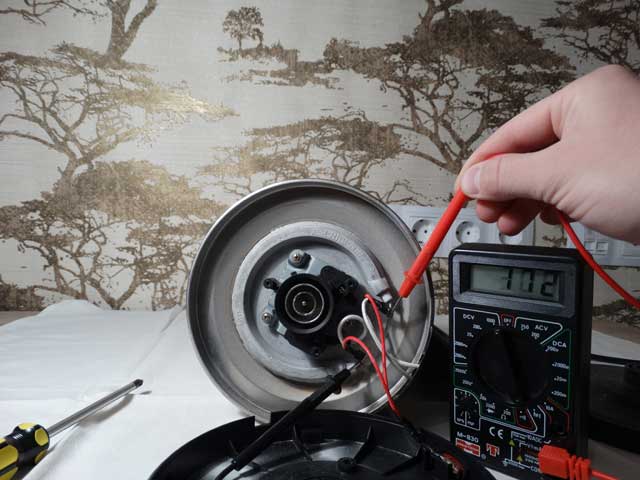 Check the contacts of the outer and inner copper ring
Check the contacts of the outer and inner copper ring See if the power button works
See if the power button works Diagnose the operation of the heating element
Diagnose the operation of the heating element
Repair of indication of inclusion and backlight
For ease of use, kettles are equipped with a power-on indicator. It can be made on the basis of a neon lamp or an LED. It can also be backlit. In this case, the indicator can be combined with the backlight.

Electric kettle with light Polaris PWK 1767CGL
The indication allows you to determine whether the kettle is well installed on the stand, whether it is plugged into the socket. It also performs some diagnostics. After all, if the light is on, and the water is not heated, this signals a poor contact or malfunction of the ten.
Electric kettle on indicator
An indicator of turning on, maybe a neon lamp or an LED connected to the terminals of the heating element. The light bulb is usually switched on through a current limiting resistor of about 200 kOhm. Malfunctions are extremely rare and usually broken conductors. The light bulb is checked by replacing, and the resistor with a tester.
When using an LED, a rectifier (diode) and a current limiting resistor are used. All together they form the so-called driver. Parts are checked by a tester.
LED lights
LEDs are chosen for backlighting, since they have a high luminescence brightness. Neon is not good in this case. As in the case of the indication, the power is supplied by the driver. The diagram is simple and is shown below:

Simple LED Driver
Breakdowns are rare and the weak link here is the LED.
Features of work
 Most of the models of electric kettles today turn off on their own after boiling water. There are modifications with manual shutdown. Before using it for the first time, it is recommended to fill the product with water and bring it to a boil. It is also necessary to wash the kettle at least 2 times before use. If the products have not been used for a long time, you should do the same. Modern devices are made of heat-resistant plastic or stainless steel.
Most of the models of electric kettles today turn off on their own after boiling water. There are modifications with manual shutdown. Before using it for the first time, it is recommended to fill the product with water and bring it to a boil. It is also necessary to wash the kettle at least 2 times before use. If the products have not been used for a long time, you should do the same. Modern devices are made of heat-resistant plastic or stainless steel.
Before cleaning electrical devices, disconnect them from the power supply. If they are cold, wash the outer surface with a damp cloth. The use of abrasive substances is prohibited. Water heating is carried out thanks to the presence of a special element inside the kettle. It is fixed to the body. Fixation is achieved using:
- threaded sleeve;
- metal nuts;
- screws holding the housing against the water-tight seal.
Often, these seals provoke leaks. In the latest models on the market, the disc cell is closed and located at the bottom of the water compartment. This is done to make cleaning the surfaces easier and easier. This measure also ensures better descaling. In various models, the seals are made in the form of:
- gaskets;
- washers;
- bushings.
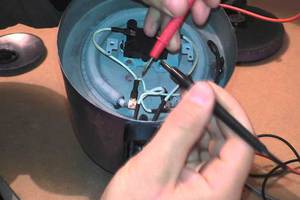 A protective device is provided in almost all models. It is responsible for turning off the device after boiling water. This element is triggered if someone turns it on without first pouring water. In addition, modern products are designed in such a way that the user can visually control the amount of liquid poured.
A protective device is provided in almost all models. It is responsible for turning off the device after boiling water. This element is triggered if someone turns it on without first pouring water. In addition, modern products are designed in such a way that the user can visually control the amount of liquid poured.
To connect to the power supply, a cord or wire is available, the feature of which is flexibility. It has a plug on one end and a power connector on the other. It has sockets for contact. A coiled power cord is provided to save desk space. It is also good for families with small children, as it is less accessible to them.
Electric kettle repair
An electric kettle is not such a complicated electrical appliance that you cannot figure it out yourself. And even the simplest repair in a workshop will be comparable in cost to buying a new device. So, it makes sense to try to repair the kettle yourself.
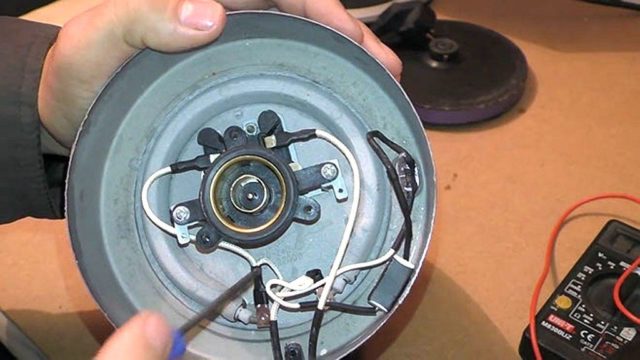
We measure the resistance of the heating element of the kettle
Checking the performance of the heating element
Therefore, when repairing an electric kettle, the first thing we do is check the heating element. First, we disassemble the kettle. To do this, turn it upside down.There should be screws on the bottom of the jug that hold the plastic protective bottom. We unscrew them all, remove the protective cover. The conclusions of the heating element are opened. It is difficult to get confused. In addition to the contacts of the heating element, there can only be a fuse here. By the way, if it's there, it doesn't hurt to check it either. We check it in the resistance measurement mode. There should be little resistance. If an open or short circuit is measured, we are looking for a replacement.

First of all, when repairing an electric kettle, we check the heating element
Therefore, when repairing an electric kettle, the first thing we do is check the heating element. First, we disassemble the kettle. To do this, turn it upside down. There should be screws on the bottom of the jug that hold the plastic protective bottom. We unscrew them all, remove the protective cover. The conclusions of the heating element are opened. In addition to the contacts of the heating element, there can only be a fuse here. By the way, if it's there, it doesn't hurt to check it either. We check it in the resistance measurement mode. Resistance should be zero. If a break is measured, we are looking for a replacement.
How to check the heating element in the kettle? Using the same tester, and also in the resistance measurement mode. If the heating element burns out, the multimeter will show an open circuit (infinitely more resistance). If the heating element is intact, you can continue to troubleshoot the electric kettle. This means that the kettle does not turn on for some other reason.
"Whole heating element" is if, when measuring its resistance, the multimeter does not show a short circuit and not infinitely high resistance, but numbers ranging from several tens of ohms to hundreds.
It all depends on the power, the more power, the less resistance. Here are some values for current consumption versus power:
| Device power, kW | 0,5 | 1,0 | 1,5 | 2,0 | 2,5 | 3,0 | ||
| Consumption current, A | 2,3 | 4,5 | 6,8 | 9,1 | 11,4 | 13,6 | ||
| Resistance, Ohm ≈ | 95 | 49 | 32 | 24 | 19 | 16 |





